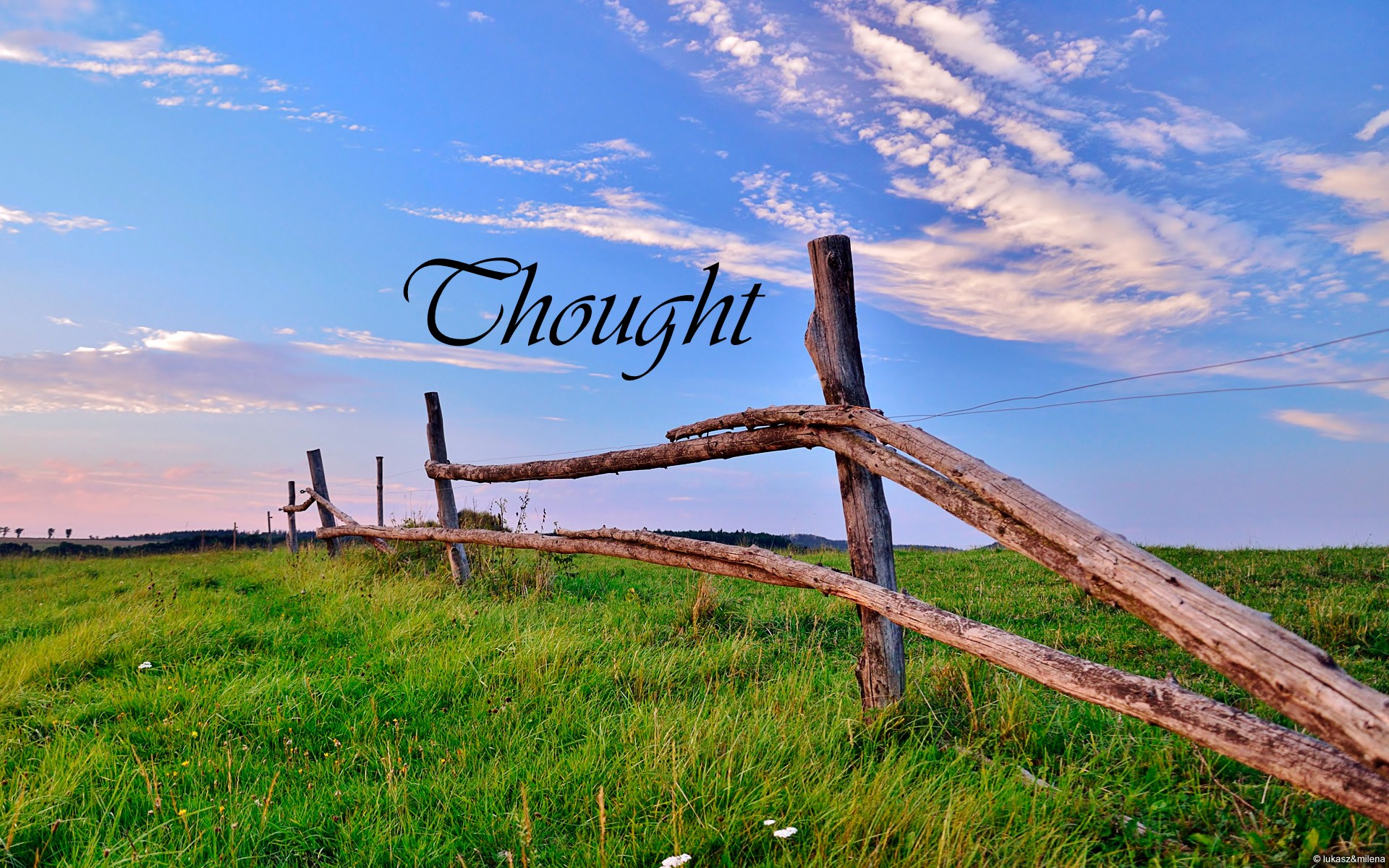Nearly 400 years ago God fearing men wanted to leave the Old World because they found it had gone to far away from Gods Word. The trek to the west had been started long before because of economical, political and religious reasons.
First American Indian converted to Christianity
In 1565 first the Spanish enter the new land and found an opportunity to get a lot of goods back to their country, making. themselves, their masters and the Roman Catholic Church richer
In 1584 Sir Walter Raleigh had landed on Roanoke Island in present day North Carolina and named the land Virginia in honour of the “Virgin Queen” Elizabeth. One year later most of the settlers in Roanoke returned to England with Sir Francis Drake. In 1587 John White returned to Roanoke and when he found no one he left another group of settlers. John White’s grandchild Virginia Dare is the first English child born in America. The settlers convinced some natives about the message Jesus had brought also to them and Manteo becomes the first American Indian converted to Christianity.
Looking for Gold
Based on George Weymouth’s accounts of voyages to the New England area in 1606, two private companies were formed to seek a patent for colonization on the Atlantic Coast. One of these companies was called the London Company who brought settlers from England, representing England and its King, James I, they founded Jamestown, on a river they named the James River, establishing the colony of Virginia on the mainland of North America.
The other company was called the Plymouth Company and its patent was for northern Virginia.
English men, often lesser scions of nobility, with no future in overpopulated England, were lured by the Virginia Company with promises of land and wealth, but did not find what they had hoped for. Most of those original Jamestown settlers were after profit, mainly riches in the form of gold and other precious metals. They had not given enough thought to the perils that they would face in this unknown land. There was no gold in Virginia, and these “prospectors” didn’t know how to farm, didn’t know how to hunt, and — possibly feeling betrayed by the Virginia Company’s promises, and lacking any land of their own — were not known for their spirit of cooperation either among themselves, nor with the local Indians of the Powhatan confederacy.*
A Mariage giving general peace and a spirit of goodwill

English: Artist depiction of Pocahontas saving the life of Capt. John Smith. MEDIUM: 1 print : chromolithograph, color. B size. (Photo credit: Wikipedia)
Pocahontas “the most deare and wel-beloved” daughter of Powhatan, the powerful chief of the Algonquian Indians in the Tidewater region of Virginia, probably saw white men for the first time in May 1607 when Englishmen landed at Jamestown. The one she found most likable was Captain John Smith. The first meeting of Pocahontas and John Smith is a legendary story, romanticized by Smith in his later writings. The European in fear got acquainted with a mock “execution and salvation” ceremony which was traditional with the Indians and part of their many rituals.
In a new settlement, Henrico, which was under the leadership of Sir Thomas Dale she met a successful tobacco planter named John Rolfe in July 1613. John Rolfe was a very religious man who agonized for many weeks over the decision to marry a “strange wife,” a “heathen” Indian. He finally decided to marry Pocahontas after she had been converted to Christianity, “for the good of the plantation, the honor of our country, for the glory of God, for mine own salvation….” Pocahontas was baptized, christened Rebecca, and later married John Rolfe on April 5, 1614. A general peace and a spirit of goodwill between the English and the Indians resulted from this marriage.
Powhatan women grew the food, while in a completely separate sector, a sort of back area of the village, men grew the tobacco. Tobacco, being liked by the white people and seen as a good export product became the rage. By 1619 Jamestown had exported 10 tons of tobacco to Europe and was a boomtown. The export business was going so well the colonists were able to afford two imports which would greatly contribute to their productivity and quality of life: 20 Blacks from Africa and 90 women from England. The Africans were paid for in food; each woman cost 120 pounds of tobacco.*
Christian Puritan Separatists

Mayflower replica
The 41 Christian Puritan Separatists known collectively as the Leiden group did have perhaps better hopes and ideas than those who looked for the pure gold. They had left Europe on Sept. 16, 1620 with the ship “Mayflower” with 102 passengers, to set off from Plymouth, England on it journey to the New World.
When they arrived they anchored off the tip of Cape Cod, in an area now known as Massachusetts, and before they even set foot on shore they wrote, and all the men signed, the agreement called the “Mayflower Compact” that would set the rules to guide them through the early, hard times of establishing a new community. The Compact, which was signed on November 21, 1620 served as the official Constitution of the Plymouth Colony for many years.

Pilgrim tercentenary half dollar commemorative reverse
Not long after the Pilgrims arrived in Plymouth (1628) the Puritans came to Massachusetts and settled Naumkeag (later called Salem). John Winthrop, carrying the Massachusetts Bay Charter, arrived in 1630 and founded Boston. Maine was annexed to Massachusetts in 1652 and later the Plymouth Colony was too.
The “Hollanders”
Although the Dutch West India Co. explored and began to settle the New York area as early as 1614, the principal occupation of the area did not occur until 1624 when Dutch settlers arrived at Governors Island and then spread to other areas in the region.
Those people from the North of the Low Countries had already had remembrances of their ancestors having to cope with Carolingian rule, loose integration into the Holy Roman Empire and Viking depredation followed by the Reformation which inflamed religious passions.
With the art of printing, having been able to read the Holy Scriptures in the own language many Catholics their eyes had been opened to the truth.
In 1566 William of Orange, a convert to Calvinism and the father of his people, started the Eighty Years’ War to liberate the Dutch from the Catholic Spaniards and the brutality of the Duke of Alba.
The in in 1480 by Catholic Monarchs Ferdinand II of Aragon and Isabella I of Castile founded Inquisición or Tribunal of the Holy Office of the Inquisition brought terror and had no mercy for the ‘heretics’. The Inquisition was created through papal bull, Ad Abolendam, issued at the end of the 12th century by Pope Lucius III as a way to combat the Albigensian heresy in southern France.
Jews and Muslims alike
The Spanish Inquisition can be seen as an answer to the multi-religious nature of Spanish society following the reconquest of the Iberian Peninsula from the Muslim Moors. For almost 600 years, much of the Iberian Peninsula was dominated by the Moors following their invasion of the peninsula in 711 until the early 13th century. Following the Christian victory at the Battle of Las Navas de Tolosa (1212), and the fall of Córdoba (1236) and Seville (1248), Christian rule was re-established for most of the peninsula. Only the small region of Granada remained under Muslim rule which also ended with a final Christian victory in 1492. However, the Reconquista did not result in the total expulsion of Muslims from Spain, since they, along with Jews, were tolerated by the ruling Catholic elite. Large cities, especially Seville, Valladolid and Barcelona, had significant Jewish populations centered in Juderia, but in the coming years the Muslims were increasingly subjugated by alienation and torture. The Jews, who had previously thrived under Muslim rule, now suffered similar maltreatment.
Anti Judaism
The South of Europe, were many Jews and Muslims had brought a lot of knowledge and wealth to the country. Nevertheless, in some parts of Spain towards the end of the 14th century, there was a wave of violent anti-Judaism, encouraged by the preaching of Ferrand Martinez, Archdeacon of Ecija. The pogroms of June 1391 were especially bloody: in Seville, hundreds of Jews were killed, and the synagogue was completely destroyed. The number of people killed was also high in other cities, such as Córdoba, Valencia and Barcelona.
You can imagine that for many Jews it was safer to become a name Christian, but still keeping faithful to their monotheist belief, reading the Torah and doing prayers to the One and Only Elohim Hashem Jehovah, the God of gods. Some could probably also have found a better place at first by the anabaptist Christians who also believed in only one God. But when more people got to know those Christians who did not want to believe in a Trinity, they again were in danger of their life.
Of the Jews forced into a Roman Catholic baptism they knew they could legally return to Judaism, but a person who had consented to baptism under threat of death or serious injury was still regarded as a voluntary convert, and accordingly forbidden to revert to Judaism.
When the monarchs decided to introduce the Inquisition to Castile to discover and punish crypto-Jews, they looked for new places to live and went everytime more north when the conquistadores came closer.
Antwerp safe place for Jews and non-Catholics
Jewish moneylenders and financiers did a large business loaning money to the English government in the 1544–1574 period and found in the city of Antwerp, then part of the Duchy of Brabant, a nice environment to build up their life. London bankers were too small to operate on such a scale, and Antwerp had a highly efficient stock exchange that itself attracted rich bankers from around Europe.
Many non-trinitarian believers living in the south of the Low Countries (present Belgium) could not keep up their faith openly and had to face torture until death, when they were caught. In 1556 1700 non-trinitarian Baptist were put at the stake in Vilvoorde. With the non-trinitarian Christians there were also other Christians who did not want to stay under the Roman Catholic ‘Empire’ any more. The Lutheran movement of Martin Luther, the Anabaptist movement of the Dutch reformer Menno Simons, and the Reformed teachings of John Calvin all gained followers by the middle of the 16th century.
At one time Antwerp had become the richest city in Europe. Over the first half of the 16th century Antwerp grew to become the second-largest European city north of the Alps by 1560. Many foreign merchants were resident in the city. Francesco Guicciardini, the Venetian envoy, stated that hundreds of ships would pass in a day, and 2,000 carts entered the city each week. Portuguese ships laden with pepper and cinnamon would unload their cargo. According to Luc-Normand Tellier “It is estimated that the port of Antwerp was earning the Spanish crown seven times more revenues than the Americas.” (Luc-Normand Tellier (2009). “Urban world history: an economic and geographical perspective) It accounted for 40% of world trade.
Religious revolution hitting Low Countries

William the Silent = William of Orange, in 1555
Willem de Zwijger or Willem van Oranje (William of Orange), born in the House of Nassau as Count of Nassau-Dillenburg, in an iconic speech to the Council of State, to the shock of his audience motivated his conflict with King Philip II by saying that, even though he had decided for himself to keep to the Catholic faith, he could not approve that monarchs should desire to rule over the souls of their subjects and take away from them their freedom of belief and religion.
In early 1565, a large group of lesser noblemen, including William’s younger brother Louis, formed the Confederacy of Noblemen. On 5 April, they offered a petition to Margaret, Duchess of Parma, requesting an end to the persecution of Protestants.

Destruction in Onze-Lieve-Vrouwekathedraal, the Cathedral Church of Our Lady in Antwerp , the “signature event” of the Beeldenstorm, August 20, 1566, by Frans Hogenberg
Different beliefgroups became confronted with the strong Catholics. The heathen statues and pictures in the church buildings where a thorn in the eye. From August to October 1566, a wave of iconoclasm (known as the Beeldenstorm) spread through the Low Countries. Calvinists, Anabaptists and Mennonites, angry with their being persecuted by the Roman Catholic Church and opposed to the Catholic images of saints (which in their eyes conflicted with the Second Commandment), destroyed statues in hundreds of churches and monasteries throughout the Low Countries.
The religious revolution erupted in violent riots in August 1566, as in other parts of the . The regent , was swept aside when Philip II sent the Duke of Alba at the head of an army the following summer.

Blue: spread of the Beeldenstorm in the Low Countries; Brown: the independent Bishopric of Liège
In late 1566, and early 1567, it became clear that Margaret of Parma would not be allowed to fulfil her promises, and when several minor rebellions of the Reformation failed, many Calvinists (the major Protestant denomination) and Lutherans fled the country.
When the Eighty Years’ War broke out in 1572, commercial trading between Antwerp and the Spanish port of Bilbao collapsed and became impossible. On 4 November 1576, Spanish soldiers plundered the city. During the Spanish Fury 7,000 citizens were massacred, 800 houses were burnt down, and over 2 million sterling of damage was done.
Antwerp became the capital of the Dutch revolt. In 1585, Alessandro Farnese, Duke of Parma and Piacenza, captured it after a long siege and as part of the terms of surrender its Protestant citizens were given two years to settle their affairs before quitting the city.

Hellburners at Antwerp by Famiani Strada
There followed an epic struggle against the Spanish that did not end until the Peace of Westphaliain 1648.
The Dutch Republic was born, a nation with Protestants, Catholics and Jews—and an unusual policy of tolerance. However, the southern provinces (present day Belgium) remained under Habsburg rule, Holland benefiting greatly from the resulting eclipse of Flemish cities and massive influx of refugees.
Evangelizing and moving forwards
In many countries protestantism was looked at with a bad eye. Facing the storm lots of people had to have a close call for the sake of their believes having a near escape finding village after village until they came into the ports which sold them the boat trip.
Jantje van Leyden became the ruler of a newly founded city, New Jerusalem. Anabaptists survived throughout the centuries and they were recognized by the States-General of the Netherlands in 1578. Institutionalized Dutch baptism stood for a model for both English and American Baptists.
The many Jews who had come under pressure to convert to Catholicism either became serious Roman Catholics
Visigothic or Mozarabic Rite Christians who had gone north, with the mixture of Jews and Anabaptists preachers could spread the Word of God in a world which could find out that the Roman Catholic Church had brought in many rules and regulations which are not required by the Mozaic Law or Law of God.
Medieval Spain and Portugal was the scene of almost constant warfare between Muslims and Christians. Many tribes, religions and races coexisted in al-Andalus, each contributing to the intellectual prosperity of Andalusia. Literacy in Islamic Iberia was far more widespread than many other nations in the West at the time.

Averroes, founder of the Averroism school of philosophy, was influential in the rise of secular thought in Western Europe.
With the tolerance of al-Andalus and the decline of the previous centre of Jewish thought in Babylonia, al-Andalus became the centre of Jewish intellectual endeavours. Poets and commentators like Judah Halevi (1086–1145) and Dunash ben Labrat (920–990) contributed to the cultural life of al-Andalus, but the area was even more important to the development of Jewish philosophy. A stream of Jewish philosophers, cross-fertilizing with Muslim philosophers, (see joint Jewish and Islamic philosophies) culminated in a widely celebrated Jewish thinker of the Middle Ages, Maimonides (1135–1205), though he did not actually do any of his work in al-Andalus, as, when he was 13, his family fled persecution by the Almohads.
+
Previously: Leaving the Old World to find better pastures
Men of faith
To be continued: Built on or Belonging to Jewish tradition #2 Roots of Jewishness
Please do read:
* A Brief History of Jamestown, Virginia
Also of interest:
- Religion, fundamentalism and murder
- Christian values and voting not just a game
- Judeo-Christian values and liberty
- Liberal and evangelical Christians
- Some one or something to fear #6 Faith in the Most High
- Fear of God
+++
Related articles
- Sample Biography of John Smith (thinkingbookworm.typepad.com)
The son of a commoner, John Smith sought adventure and advancement through military service. Doherty (2001) outlined the history of Smith as soldier starting from his first battles in the Netherlands and then in France, Smith he asserted fought as a professional soldier. Later, after being robbed and stranded in Europe, Smith became a pirate and made a small fortune. Ultimately, Smith served in the Christian armies that fought against the Turks in Eastern Europe. - “Fifty shades of green” perhaps? (charioteers.org)
Virgin Earth by Philippa Gregory and it should appeal to historians who enjoy gardening and gardeners who like a bit of history. So I thought quite a few Charioteers might enjoy it, if they don’t already know it. - A Colonial in the family? (schmidleysscribblins.com)
Rachel’s family had lived in the same settlement in NC for decades by the time of her birth in 1919. Rachel’s mother died when she was 4 years old, impoverishing her farm family.
+
Rachel had ancestors at Jamestown (1607), of English origin. One of them bought the land for his house from John Rolfe (husband of Pocahontas). Coming forward, a century or two, Connie located six ancestors (so far) who fought in the American Revolution. - some nice pictures from Jamestown & Mini-Golf Fun (thecoasttocoasttrips.com)
Colonial National Park and explored the remnants of Jamestown - What’s in a Name? | Pungo, Virginia Beach (hamptonroads.com)
Go back about 400 years, when the natives of this region spoke a language known as Algonquian. The settlers who arrived in the early 1600s did plenty of heavy-handed renaming – think Elizabeth River – but also adopted a lot of local words. Pungo stuck to the area that’s now the farming belt of southeastern Virginia Beach. - Musings of a Mature Man Who Did Not Plan to Switch Churches Ever Again…but Did (catholicboyrichard.com)
Truth all depends on which presupposition you start with. So also with falsehood, and every conceivable combination of both. This is true in daily living, as well as in individual trains of thought.
+
After a 7 year return to the Roman Catholic circles where I was brought up in and nurtured in my early years, I find myself currently struggling with many of the presuppositions built into their particular interpretation of a beautiful yet bloody, gorgeous but at times grossly savage, and solid but unbendable set of Traditions which I otherwise love deeply.
+
Another would be the wide and varied decisions made at “ecumenical” (meaning in this case universal or Church-wide) Councils (such as 4th Lateran) which in Canon 3 determined under what circumstances to take land (and therefore livelihood) away from those considered to be wayward and which elsewhere established guidelines whereby Jewish people could be officially persecuted—all during the same Council which clarified the beautiful and clearly dogmatic teaching of Eucharistic Transubstantiation or what is commonly known as the “Real Presence” of Jesus Christ in Holy Communion—the explanation given of course is that these first two just mentioned and any such discretionary decisions were not actual “teachings” of the Church but rather disciplinary action plans which were in retrospect mistakes, but which take away nothing from the authenticity and authority of the Church in the areas of faith and morals. I cannot help but wonder though how many of the affected illiterate peasants could possibly have understood the difference between a teaching and a discipline? All that they knew was “The Church, the one true Church, has spoken.” And thus she did and still does. Most Catholics in fact still do not know the difference when pressed. - Where to find exceptional America (cnn.com)
This week, CNN is exploring American exceptionalism — the concept that the United States is exceptional when compared to other nations and is uniquely destined to bring democracy to the world. - Ten Commandments (gadelali.wordpress.com)
Division of the Ten Commandments by various Faiths Commandment Jewish (Talmudic) Anglican, Reformed, and other Christian Orthodox Christian Catholic Christian, Lutheran I am the Lord your God 1 preface 1 1 You shall have no other gods before me 2 1 You shall not make for yourself an idol 2 2 Do not take the name of the Lord in vain 3 3 3 2 Remember the Sabbath and keep it holy 4 4 4 3 Honor your father and mother 5 5 5 4 You shall not kill/murder 6 6 6 5 You shall not commit adultery 7 7 7 6 You shall not steal 8 8 8 7 You shall not bear false witness against your neighbor 9 9 9 8 You shall not covet your neighbor’s wife 10 10 10 9 You shall not covet anything that belongs to your neighbor 10 …




























 Biblestudents – Bijbelstudenten
Biblestudents – Bijbelstudenten 0 + Bloggers for Peace
0 + Bloggers for Peace Free Christadelphian Ecclesia
Free Christadelphian Ecclesia Hoop tot Leven – Redding in Christus
Hoop tot Leven – Redding in Christus Vrije Broeders in Christus (Free Flemish Christadelphians on Wordpress)
Vrije Broeders in Christus (Free Flemish Christadelphians on Wordpress)















Very nice post , specially because it strengthens the Judaic Culture. “If your brother becomes impoverished and his hand falters with you, you shall hold on to him [strengthen him]…so that he can live with you” (Leviticus 25:35).
LikeLike
Pingback: Built on or Belonging to Jewish tradition #2 Roots of Jewishness | Marcus' s Space
Pingback: Built on or Belonging to Jewish tradition #4 Mozaic and Noachide laws | Marcus' s Space
Pingback: God in Australische Grondwet « Christadelphians : Belgian Ecclesia Brussel – Leuven
Pingback: Faith related boycots | Marcus' s Space
Pingback: Right to be in the surroundings | Marcus' s Space
Pingback: Stichters van de Nieuwe Wereld en Godsdienstvrijheid « Christadelphians : Belgian Ecclesia Brussel – Leuven
Pingback: People of Faith for Obama video « Christadelphians : Belgian Ecclesia Brussel – Leuven
Pingback: Life is to precious « Belgian Biblestudents – Belgische Bijbelstudenten
Pingback: Follower of Jesus part of a cult or a Christian « Christadelphians : Belgian Ecclesia Brussel – Leuven
Pingback: Victims and Seekers of Peace | Marcus' s Space
Pingback: Teaching Holy Scriptures in Schools | Marcus' s Space
Pingback: Inspired Word | Broeders in Christus
Pingback: Migrants to the West #9 Where they came from | Marcus' s Space
Pingback: Looking to the East and the West for Truth | Broeders in Christus
Pingback: Catholicism, Anabaptism and Crisis of Christianity « Stepping Toes
Pingback: Religions and Mainliners | From guestwriters
Pingback: An anarchistic reading of the Bible (2)—Creation and what follows | Stepping Toes
Pingback: Theologians and a promised Spirit to enlighten us – Messiah For All
Pingback: Leaving the Old World to find better pastures – Belgian Ecclesia Brussel – Leuven
Pingback: Inquisition also bad for Jews | From guestwriters
Pingback: Act of Faith held on February 6, 1481 | Stepping Toes
Pingback: This fighting world, Zionism and Israel #7 – Jeshuaisten / Jeshuaists
Pingback: So-called own sacred values under threat | From guestwriters